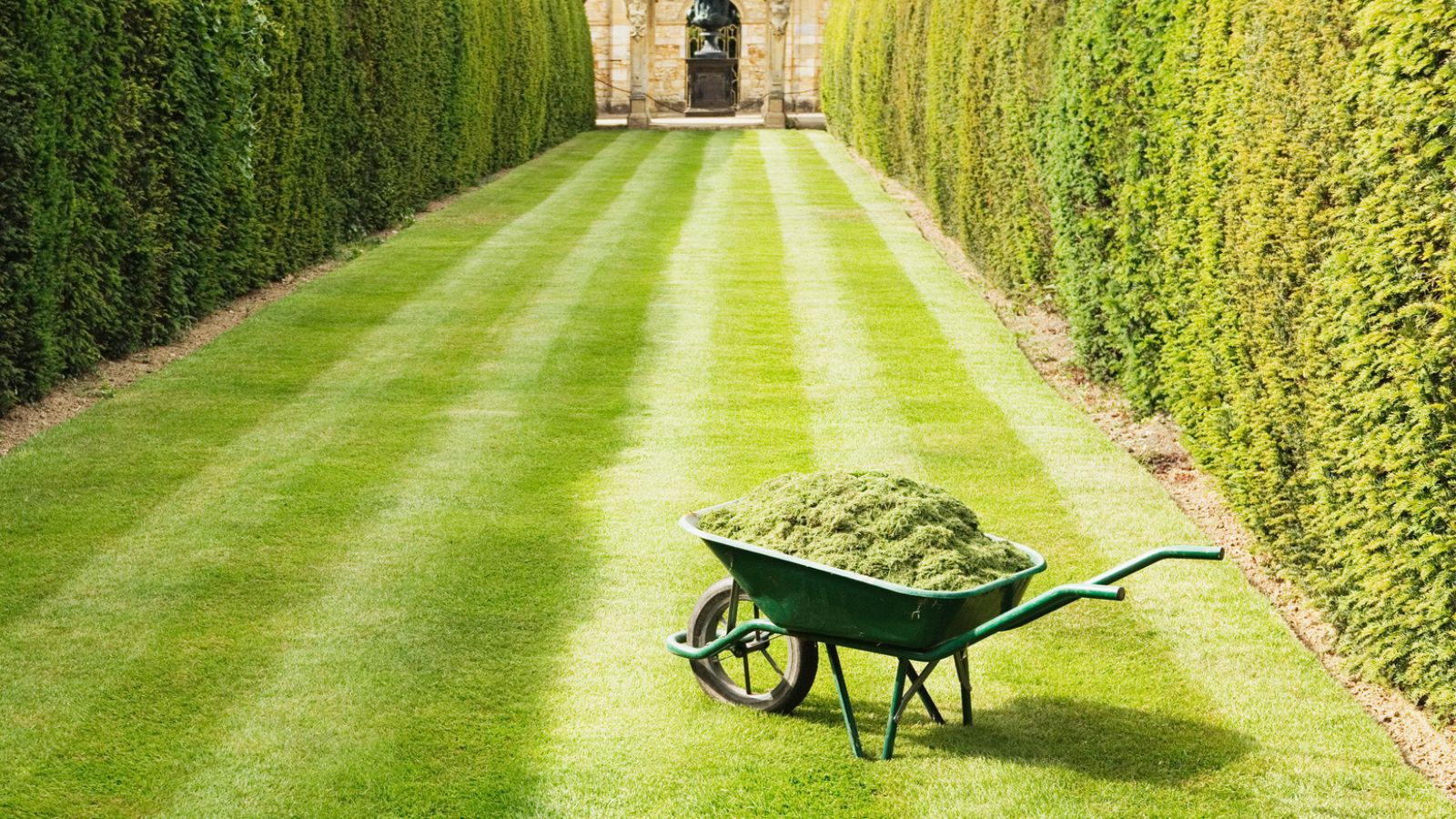
Now is the time to top dress a lawn. Top dressing, or adding a layer of top soil (usually a combination of sand, silt and clay), is usually done when your lawn is in active growth – once your regular, weekly mowing routine has kicked off – to strengthen the health of the grass and to achieve a neat, flat finish.
Ensure you top dress the lawn on a day that's warm but not hot, and repeat the process again in fall.
'Top dressing is a valuable task in lawn care as it helps to improve the structure and drainage of the soil as well as helping the lawn to look good. It can be valuable to even out a lawn, helping to establish a smooth surface by levelling out hollows,' says H&G's garden expert Drew Swainston.
When to top dress a lawn
'Top dressing a lawn is usually carried out in the spring or late fall and done after other annual lawn maintenance tasks such as getting rid of moss in lawns, scarifying and aeration,' continues Drew.
'These three lawn care tasks are always recommended as part of an annual spring and fall lawn maintenance regime to help ensure a smooth and luxurious lawn you can enjoy on summer days.'
Why top dress a lawn?
Top dressing a lawn is largely about improving grass health.
'The lawn provides an open space for play and relaxation but, perhaps more importantly, a healthy lawn that's just smaller in area than a tennis court produces enough oxygen on its own to meet the daily requirements of a family of four, according to the Lawn Institute,' says our gardening expert Steve Bradley.
'Top dressing means the nutrients in the mix help to boost the fertility of the grass and produce new shoots, to thicken the overall sward and strengthen roots to maintain its health,' comments Drew.
'Top dressing with a proprietary lawn mix improves structure of the grass and encourages robust rooting,' advises Ruth Hayes, one of H&G's gardening experts. Wonder Soil Top Dressing is highly recommended on Amazon; Natural Guard at Walmart is a good organic choice.
However, top dressing can work to smooth out humps and bumps in lawns.
'In the past, a roller was recommended for this uneven ground. In reality, this often makes the situation worse as the action of rolling compresses the hollows either side of the hill and makes a rise in level more pronounced,' advises Steve. 'The heavy roller can also cause compaction, which is a different problem. Instead, minor dips and depressions can be dealt with by applying a soil-based top dressing.'
Top dressing can also be a good method for helping repair patches in lawns.
'I would spike the lawn with an aerator or garden fork, then top dress with equal measures of soil conditioner and sharp sand,' advises gardening expert John Negus. 'Use the back of a rake to work it into the holes.'
How to top dress a lawn
First, prep: 'Top dressing is often done after aerating and involves brushing a mix of loam and sand over the grass to feed the soil and improve growing conditions,' advises gardening expert Ruth Hayes.
'Gradually add no more than a layer ½in thick, so the grass can grow though it and form roots at a higher level,' continues Steve Bradley. 'If the top dressing is too deep the grass beneath will die off and leave a bare patch where weeds can establish.
'When dealing with raised hills and sunken hollows, cut the turf and peel it back and then adjust the soil level before replacing the turf. When filling a hollow, leave the level slightly higher as you finish to allow the new soil to settle.'
FAQs
Should you top dress in spring or fall?
You can top dress a lawn when it is in active growth. Lawns can be top dressed twice yearly, but if you are only going to do the job once, for best results, top dress warm-season grass in spring, and cool-season grass in fall. If you're not sure of your grass type a quick tell is that warm-season grasses grow from late spring and become dormant in early fall; cool-season grasses grow from early spring and become dormant in late fall).
Should I scarify before top dressing?
Yes, you should scarify or aerate your lawn before top dressing grass for best results. In fact, making top dressing part of your lawn care maintenance program with other tasks will only help boost the health of your grass further.
Should I mow before top dressing?
Yes, it is a good idea to time mowing a lawn and dethatching with top dressing. Ideally, mow the lawn the day before you plan to top dress the grass, and be sure to remove any grass cuttings, dead leaves and debris, too. This will ensure that the top dressing can reach the roots of the grass rather than smothering it.
How many times a year can you top dress a lawn?
You should ideally top dress a lawn just twice a year: in spring and fall, when the grass is in active growth. If you top dress too often you run the risk of smothering the grass.
Our lawn experts
Once you have top dressed your lawn, allow it to establish for a couple of days then take a rake to it, gently smoothing it into a neat flat surface, ridding it of any humps or bumps that have formed. Leave at least a week before you mow the grass again and new growth has begun to establish.







